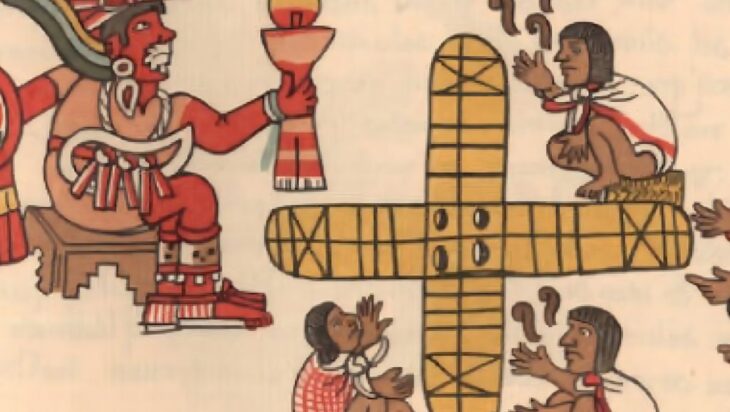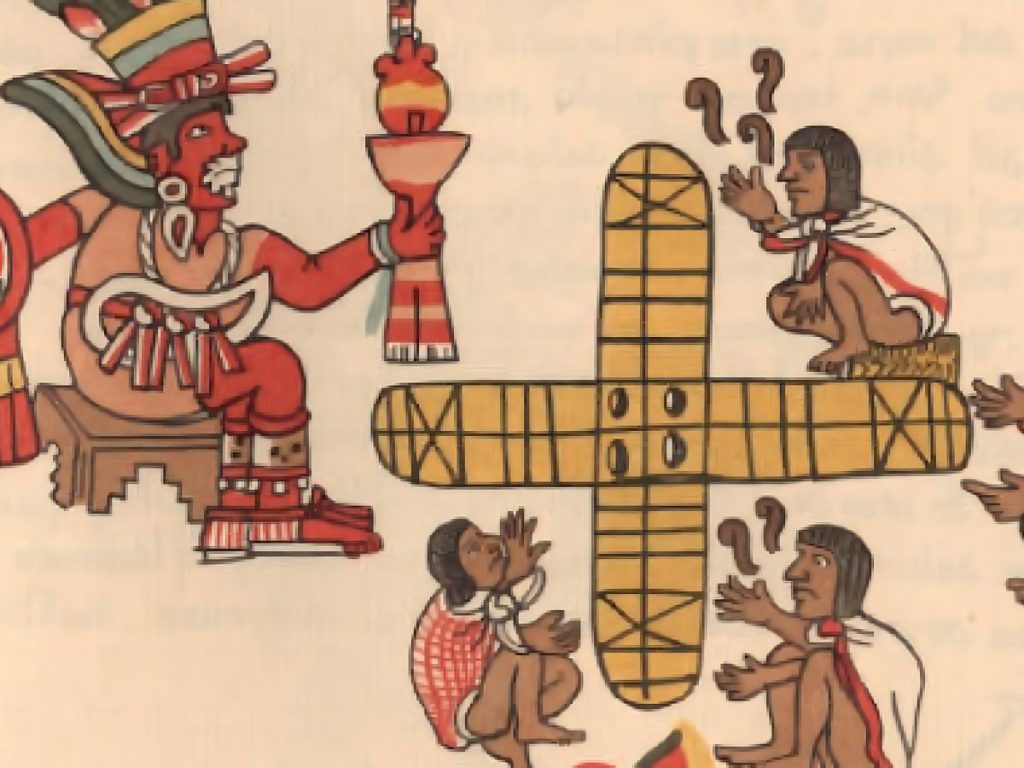Exploring Aztec civilization through the ancient game of Patolli

Prepend to the content

Games uniquely reflect culture, providing insights into the social fabric, values, and daily life of a society. Similarly, the historic game Patolli is closely connected to the Aztec community.
The Aztecs, a group of people who lived in central Mexico before the arrival of Europeans, specifically in the 14th to 16th centuries. They called themselves Mēxihcah. Their capital city was Tenochtitlan, which was built on an island in Lake Texcoco. Today, Mexico City is built on the same spot where Tenochtitlan once stood. When the Spanish came to America, they arrived in the Aztec Empire during the rule of a leader named Moctezuma II. In 1521, the Spanish conqueror Hernán Cortés, with the help of other Native American groups, defeated the Aztecs using various tactics, including battles, psychological strategies, and diseases.
In the context of the Aztecs, one game, in particular, stands out as an important cultural touchstone: patolli.
Patolli is an ancient board game played by the Aztecs, Maya, and Toltecs from around 200 BCE until the Spanish arrived. It’s a mix of strategy and luck, where players race to move all their pieces off a cross-shaped board.
To play Patolli, you need two to four players, a board with 52 spaces arranged in an X shape, six colored counters for each player, and either one die or five dried beans.
At the start, players throw the beans, and the one with the highest throw goes first. Players take turns throwing the beans and can block or send other players’ pieces back to the beginning. The first player to move all their pieces around the board wins the round and gets a point bead from an opponent. The overall winner is the one who collects all the point beads from the other players.
Patolli also involves gambling. Players bet items like blankets, food, gold, or even their homes, family, or freedom. At the start, everyone must have the same number of items to bet. The winner takes all the bets from the other players.
Understanding the nuances of this game provides a deeper understanding of Aztec civilization, especially the bustling life of Tenochtitlan, their great capital city.
The Importance of Patolli for Aztecs
Patolli was more than just a pastime for the Aztecs; it was a game of strategy and luck that deeply connected with their social and economic lives. During the harvest season, patolli games were a common sight, drawing participants from all walks of life—commoners, nobility, and everyone in between. This seasonal timing highlights the game’s connection to agricultural cycles and the prosperity of the community.
Cultural and Religious Dimensions
Patolli was not merely a game of luck but also a ritualistic practice infused with religious importance. The Aztecs often cited Macuilxochitl, the god of games, luck, and maize, before playing. This deity was believed to influence the outcome, incorporating the untable balance between fortune and disaster that characterized Aztec life.
The connection between patolli and the harvest deity reflects the broader Aztec worldview, where agricultural success was seen as a gamble influenced by divine favor. Every seed planted was a bet on the future, and this mentality was mirrored in their approach to patolli. The game itself was seen as a miniature version of life, where the whims of the gods could bring prosperity or ruin. It was a way for the Aztecs to engage with the divine and seek favor in their daily lives, much like their agricultural rituals and ceremonies aimed at ensuring an abundant harvest.
Patolli also played a role in social and communal bonding. Playing the game was a communal activity that reinforced social ties and provided an opportunity for individuals to display their skill and luck. The ceremonial aspect of patolli, including offerings and prayers to Macuilxochitl, helped to reinforce the societal values and religious beliefs of the Aztecs, making the game an integral part of their cultural and spiritual life. The outcome of the game was seen not just as a matter of personal skill or chance, but as a reflection of the player’s relationship with the divine and their standing within the community.
Patolli as a Reflection of Aztec Society
Here’s a simplified version:
“Many people played patolli, especially in Tenochtitlan. This game can help us understand how complicated Aztec society was.” The city’s rapid growth and the influx of immigrants contributed to a dynamic but unstable social environment. This urban setting, with its crowded streets and economic uncertainties, was fertile ground for gambling and the thrill of games like patolli.
The game provided an outlet for the anxieties and uncertainties of life in Tenochtitlan. For the poor, it was a tantalizing glimpse of potential wealth and betterment, although through risky means. For the nobility, it was a demonstration of status and a test of fate.
Social Implications and Spanish Disapproval
The Spanish explorers and priests who arrived in the 16th century viewed patolli with contempt, partly due to its association with Aztec religious practices and partly because of the social disruptions it caused. The betting aspect of patolli, where individuals could lose everything and sometimes resorted to selling themselves or their families into slavery, was particularly troubling to the Spaniards.
Spanish authorities attempted to suppress the game, going as far as burning the hands of those caught playing it. It is believed that this was part of a broader effort to convert the Aztecs to Christianity and dismantle their cultural practices.
The Decline of Patolli
Following the Spanish Conquest and the fall of Tenochtitlan in 1521, patolli’s prominence declined. The new rulers’ efforts to stamp out heavy gambling and the introduction of new economic opportunities gradually eroded the game’s place in Aztec culture. By the mid-1500s, patolli sightings became rare, relegated to the margins of society and far from the intensity it once commanded in the capital.
Patolli was more than just a game for the Aztecs; it was a microcosm of their experience, representing the risks, uncertainties, and religious beliefs that shaped their world. From the high-stakes betting to the invocation of gods, patolli reflected the Aztecs’ complex balance between chance and destiny. Understanding this game allows us to appreciate the rich tapestry of Aztec life, offering a glimpse into how they navigated the complexities of their existence in one of the most remarkable civilizations of the ancient world.
The post Exploring Aztec civilization through the ancient game of Patolli appeared first on G2G News.



